
Related
Guests
- Kevin Gosztolaindependent journalist who writes for a blog called “The Dissenter” at the Firedoglake website. He has covered the Occupy Philly, DC and Chicago movements and has been blogging about Occupy Wall Street since it began.
- Dorian Warrenassistant professor of political science and public affairs at Columbia University and a fellow at the Roosevelt Institute.
As the “Occupy” movement expands from the “Occupy Wall Street” protest in New York City throughout the United States, we look at its historical significance. “This is an incredibly significant moment in U.S. history,” says Dorian Warren of Columbia University. “It might be a turning point, because this is the first time we’ve seen an emergence of a populist movement on the left since the 1930s.” We also speak to Firedoglake blogger Kevin Gosztola, who has been reporting from the occupations in Chicago, Philadelphia and Washington, D.C. [includes rush transcript]
Transcript
AMY GOODMAN: Our guest Kevin Gosztola writes for “The Dissenter” blog at Firedoglake. He has been covering various Occupy movements around the country. We’re also joined by Columbia University Professor Dorian Warren, who is writing two books around organizing today, in the labor movement and in resisting Wal-Mart, and has been down at Wall Street covering that, as well.
Professor Warren, Professor Dorian Warren, talk about the significance of Wall Street today.
DORIAN WARREN: This is an incredibly significant moment, I think, in U.S. history. In fact, it might be a turning point, because this is the first time we’ve seen the emergence of a populist movement on the left since the 1930s. So I think when you think about that long stretch of time, especially in this moment where we’ve been growing more unequal as a country for the last 30, 40 years, the fact that this movement has emerged at this moment, I think, is quite significant. And there are all sorts of questions about how sustainable it will be, what are its goals. But I think it’s quite extraordinary that for the first time, especially since the ’30s, populism is now being claimed by the left and not the right.
AMY GOODMAN: Explain populism since the ’30s, what you mean by that, and the parallel.
DORIAN WARREN: So, populism—the Populist movement started the end of the first Gilded Age in the 1890s and through the 1930s, where we saw mass disruptions and mass protests by unemployed workers, especially in the 1930s.
AMY GOODMAN: The Great Depression of 1929.
DORIAN WARREN: That energy—that’s right, during the Great Depression. That energy was channeled into what we now know as the New Deal. Since the ’30s, and especially starting in the ’50s, ’60s and ’70s, the right actually claimed the label and mantra of populism, and they have successfully changed the entire discourse and politics of this country under populist rhetoric. This is the first time, I think, on the left that populism has emerged with a critique of not only the banks and corporations, but also Washington, also the U.S. political system.
AMY GOODMAN: How long did it take, from the Great Depression of 1929, for the organizing to happen?
DORIAN WARREN: It took roughly four years. We first started seeing the first uprisings around 1933, and continued in 1934, ’35, ’36. Thirty-six, ’37 is the Flint sit-down strike. So it took a while after the crash in 1929 for people to start protesting their—
AMY GOODMAN: And what did they do very first? Was it the marches of unemployed?
DORIAN WARREN: Marches of unemployed, people going into the street, in some cases actually occupying factories, as we saw later on with the Flint sit-down strike. So there was massive unrest and disruption across the country, from both farmers as well as unemployed people. And what’s interesting about that is it was farmers who were in debt both in the 1890s and the 1930s. Today it’s students in debt, to a great extent, to large banks.
AMY GOODMAN: Kevin Gosztola, you have been covering Washington, Philadelphia, Chicago, and you’ve been writing about Occupy Wall Street since the beginning. What you’re seeing in each of these different encampments and protests?
KEVIN GOSZTOLA: Well, one, I’m seeing that they want to establish their own community, that every single area is about setting up a space and actually holding it. And they’re inspired by Occupy Wall Street and how they’ve been able to do that. The other thing is having an identity that speaks to the vision of a greater society and isn’t just about electing a politician in the next election and isn’t about just voting. It’s much bigger. It’s about making a change with the system.
AMY GOODMAN: I wanted to turn to the voices of people that are at Wall Street. Democracy Now!'s Jaisal Noor has been following what's been happening on Wall Street and brings us some more of the voices of those who have been attending the marches.
WANDA KNOX: It’s money that, when they got bailed out, basically we got sold out. None trickled down to our community. They kept their money. They spent it. You understand me? They gave each other big bonuses and so much more. And meanwhile, me and my community are suffering at this point, OK?
SAM COLEMAN: My name is Sam Coleman. I’m a third grade teacher in a dual language program in Sunset Park, Brooklyn. So, in my community, we are seeing many more of our families doubling up, tripling up in apartments. I work in a mostly immigrant community, and a lot of our families are really struggling. Parents are losing jobs. We see it in the kids, as they come to school with less materials. They come to school more stressed out. And we see it in the things that are going on at home.
So, as an educator, I’m calling on our nation to change the way we think about money. Money needs to flow from the top down, not from the bottom up. So, Wall Street has been taking money from our schools, from the pockets of our families, and it needs to come the other way. These are people that have gotten billions of dollars in bailouts. They’ve been taking money in their enormous salaries. And our students and our teachers, especially our school aides, are taking the brunt of that. It needs to be reversed. Taxes need to be changed. The structure of taxes needs to change. And we need to bail out the schools and the people, and not Wall Street.
ESTHER WANG: So, hi. My name is Esther Wang. I’m with an organization called CAAAV, Organizing Asian Communities. And we’re here today with a contingent of New York City-based grassroots groups.
I mean, even before the recession, you know, people were having a hard time finding jobs, people were having a hard time affording their rent, taking care of their families. And with the recession, that only got worse in 2008. And, you know, we’re here today because we really believe in the message that the people at Occupy Wall Street are putting out, that the one percent of us, the wealthy of us, are benefiting at our expense. Right? And that can’t go on any longer.
You know, we’re really here to show solidarity. We’re really here to say that black, brown, Asian, Native communities need to be at the forefront of any movement, right when we’re talking about reforming corporate America, right when we’re talking about taking back our democracy. I’m here to support our members who are facing evictions every day, who can’t find work. I’m here to support my dad, who had a stroke and can’t afford health insurance, and so my parents are really struggling. I’m here for myself, because I know that if I don’t come out here and if others don’t come out here, who knows what our future might look like?
AMY GOODMAN: Just some of the sounds and voices of people on Wall Street on this fourth week of the occupation in New York. Professor Dorian Warren, it is sounds like these voices contradict, many are saying, the spoiled brats of Wall Street.
DORIAN WARREN: That’s right. In fact, officially the recession is supposedly over. But the first voice we heard was quite stunning, because if you think about it, there are six cities in the U.S. where black communities in those cities are facing depression conditions. Unemployment is 20 percent or higher. So, what people are expressing are—it’s not—and it’s a broad range, an inclusive range, of people across race, across ethnicity, across gender, across class lines even, in many cases. They’re expressing this anger of not just what happened in the recession in 2008, but actually 40 years of growing inequality and wage stagnation, and the top one percent, as they point to it, getting most of the rewards of people’s labor and work.
AMY GOODMAN: During his weekly radio address on Friday, New York City Mayor Michael Bloomberg said the Occupy Wall Street protests could hurt the city’s economy, this at the same time that we see teachers, aides laid off in the poorest areas of New York. Almost 700 teachers ended this past week, their jobs were ended.
DORIAN WARREN: Well, the irony of that is the Mayor is the person laying off people and increasing the unemployment rate, while Occupy Wall Street is in many ways a tourist attraction to New York. So, if anything, they’re actually contributing to the economy, with all the thousands of people that are coming out to support them or to see what’s going on, as opposed to what the city is doing in laying off hundreds of workers.
AMY GOODMAN: He said, quote — this is the Mayor — “What they’re trying to do is take the jobs away with from people working in the city” — this is about the protesters he’s talking about — “They’re trying to take away the tax base we have. None of this is good for tourism,” he said.
DORIAN WARREN: The City of New York, what we know, the top one percent take home 45 percent of the city’s income. It’s that stark inequality, that the Mayor has been silent on, that the people at Occupy Wall Street are protesting. And in fact, again, he’s the person that’s contributing to that inequality as the leader of the city, but also as a representative of Wall Street.
AMY GOODMAN: Kevin Gosztola, talk about how each of these other protests have begun: Washington, Chicago, Philadelphia.
KEVIN GOSZTOLA: It’s part of a wider movement that they call Occupy Together, and they have inspired cities. So, in Chicago, Occupy Chicago started, and they went out in front of the Federal Reserve, and they tried to establish a space there. Now, the police have been harassing, and they haven’t allowed them to be there. And now they have this restriction where they have to move 24/7 and can’t be in one location. But they have struggled, and they’ve tried to establish a space there, and they’ve done protests in front of the Board of Trade. And they’re getting hundreds of people to participate.
In D.C., they’re in McPherson Square. Occupy DC is in McPherson Square. And there’s a little synergy that came from this weekend with the October 2011 action in Freedom Plaza. But there’s mostly 75 to 100 young people who just sleep in McPherson Square. And the one thing I would tell viewers is that they are woken up every morning at 5:00 a.m. by police for—for no reason. They can’t come up with a justification for this.
AMY GOODMAN: Sounds like they’re in a hospital. That’s usually what time you get woken up.
KEVIN GOSZTOLA: Yeah. And then in Philly, where I visited yesterday, I went through, and what struck me is that there are 75 to maybe 80 tents that are set up right in front of City Hall. Not only that, they have structured their community in such a way that they have a library, and they have a safety and security tent. They have two medic tents. They have a tent that provides food for the occupiers. So, as you can see, they are really taking a hold of their space.
AMY GOODMAN: Explain what happened in Washington at the Air and Space Museum. Some people might be saying, “Why were they trying to go into the Air and Space Museum?” But the drone exhibit inside. And then what Firedoglake has revealed.
KEVIN GOSZTOLA: Right. So, we had a diarist post that there was an agent provocateur that was part of this group. And aside from what you said in the lede, he actually has lied, because he says he’s the only one who got inside the museum, but there was a banner drop that actually was done to protest the drones. And so, he was not the only person who got into the museum. And so, everybody who went in there—it appears that he laid his hands on the guard, and the guard had a reaction, and then the pepper spray started going off. And as the video that you’re showing right now, people just started running out, pouring water on their eyes. And then the protesters regrouped, and they stood on the steps. And they brought everybody together, and they tried to say, you know, for people who are passing by and are seeing this reaction happening, this is why we are here. They really tried to establish the politics of it, so it didn’t just look like chaos.
AMY GOODMAN: And for people listening on the radio, you can go to our website and see the video at democracynow.org. But talk about who this assistant editor of The American Spectator, the conservative publication, is, Patrick Howley, who revealed he himself had consciously infiltrated the group to discredit the movement.
KEVIN GOSZTOLA: Right. So, I mean, he’s obviously a right-winger. And he comes into this group. And he, himself, would like to provoke such a reaction, and he actually had the intention of going into the museum and creating this situation that would frighten individuals who would want to become participants in October 2011. And—
AMY GOODMAN: The Stop the Machine protest going into the Air and Space Museum—
KEVIN GOSZTOLA: Yeah, yeah.
AMY GOODMAN: —was not Occupy Washington.
KEVIN GOSZTOLA: It was not Occupy DC, no.
AMY GOODMAN: It was the Stop the Machine protest.
KEVIN GOSZTOLA: Right.
AMY GOODMAN: What about a call for Occupy Congress that we’ve been reading about recently?
KEVIN GOSZTOLA: Well, what I’ve been seeing is that they want to—there’s an idea floating around, and I think it’s come from the October 2011 movement, to have a People’s Congress, to actually start to hold people—have representatives come from all of these occupations that are rising up, and perhaps start to set up this way that there can be this democracy that puts forth demands coming from all of these Occupy, you know, Together movement.
AMY GOODMAN: I wanted to turn to some of the criticism. This is, speaking yesterday on Face the Nation, Republican presidential hopeful Herman Cain characterizing the protests as anti-American, suggesting the demonstrations are being coordinated to distract people from the Obama administration’s failed policies.
HERMAN CAIN: The bankers and the people on Wall Street didn’t write these failed policies of the Obama administration. They didn’t spend a trillion dollars that didn’t work; the administration and the Democrats spent a trillion dollars. They are not proposing another $450 billion; the administration is proposing another $450 billion wrapped in different rhetoric. So it’s a distraction, so many people won’t focus on the failed policies of this administration. So I stand by that.
BOB SCHIEFFER: So, wait a minute. Excuse me, I don’t want to interrupt.
HERMAN CAIN: Yeah.
BOB SCHIEFFER: You’re saying that these people all got together up there to draw attention away from Barack Obama, that’s why they’re there?
HERMAN CAIN: They were encouraged to get together.
BOB SCHIEFFER: Who encouraged them?
HERMAN CAIN: We know that the unions and certain union-related organizations have been behind these protests that are going on on Wall Street and other parts around the country. It’s coordinated to create a distraction so people won’t focus on the failed policies of this administration.
BOB SCHIEFFER: And why is that anti-American?
HERMAN CAIN: It’s anti-American because to protest Wall Street and the bankers is basically saying that you’re anti-capitalism. The free market system and capitalism are two of the things that have allowed this nation and this economy to become the biggest in the world, even though we have our challenges. I believe that the protests are more anti-capitalism and anti-free-market than anything else.
AMY GOODMAN: Professor Dorian Warren, your response?
DORIAN WARREN: Well, there’s so much to say about Herman Cain. First of all, if the protesters are anti-capitalist and anti-American, that would mean the Tea Party protesters a few years ago are also anti-American for protesting the seat of American government and the presidency.
But more important than that, all the time, whenever populist and left-wing people get involved in protesting and making demands for social justice, it’s always painted as anti-American. So that was the case in the 1930s. That was the case in the 1890s. So this is a continual trope to discredit those legitimate protesters throughout American history.
And then, finally, it’s interesting that Herman Cain said that, because when he was head of the National Restaurant Association, he led the drive to always kill an increase in the minimum wage. So he, himself, is partly responsible for the growing increase in inequality that protesters are out protesting against.
AMY GOODMAN: Now, your two books, one on organizing against Wal-Mart and the other on the labor movement—the significance of the labor movement joining with the Occupy Wall Street? You could see they are talking behind the scenes, these labor leaders, in these weeks, figuring out what to do. Like, what is this movement?
DORIAN WARREN: Absolutely.
AMY GOODMAN: And then, getting on board—
DORIAN WARREN: That’s right.
AMY GOODMAN: —and, you know, really injecting a tremendous amount of, well, to say the least, bodies, people.
DORIAN WARREN: And resources, yes.
AMY GOODMAN: As one of the labor leaders got up—right, and resources that they have—he said, “People are asking if this movement has legs. We’ve got all the legs we need.” But talk about that and the labor organizing now that’s—
DORIAN WARREN: I think—I think it’s really significant, because, as we know, the labor movement has been on decline in this country for the last 30 years, mostly because of hostility from employers, who illegally fire workers and try to quell organizing campaigns. Unions have been making some of the same critiques for a long time but have not gotten the leverage politically or economically as the protesters have, in terms of capturing our imagination.
What’s really interesting about labor’s participation is that, while they did really jump in quickly to support the protesters, what’s important is that they didn’t try to take over the decision-making process. And I think that’s key. It’s great to support with resources and bodies, but let the movement develop and insist on its own egalitarian, democratic processes of decision making. And I think as long as other progressive groups don’t try to jump in and take over, and let this movement grow, it could be quite powerful and transformative.
AMY GOODMAN: I wanted to bring in President Obama, what he had to say for the first time about the Wall Street movement, the Occupy Wall Street movement. He was at the White House. He spoke at a news conference saying he understands the protesters’ frustration but ultimately believes in the financial sector.
PRESIDENT BARACK OBAMA: I think it expresses the frustrations that the American people feel, that we had the biggest financial crisis since the Great Depression, and yet you’re still seeing some of the same folks who acted irresponsibly trying to fight efforts to crack down on abusive practices that got us into this problem in the first place. So, yes, I think people are frustrated, and, you know, the protesters are giving voice to a more broad-based frustration about how our financial system works. Now, keep in mind—I have said before, and I will continue to repeat—we have to have a strong, effective financial sector in order for us to grow.
AMY GOODMAN: That’s President Obama responding to the Occupy Wall Street movement. Kevin Gosztola?
KEVIN GOSZTOLA: Well, Barack Obama has actually said that none of the banks committed anything illegal. He said that last week. And so, I think, as the people who are out in these squares across the country are considering where their movement is going to go, they’re watching these unions, and I think a lot of them are afraid, because usually the unions are affiliated with the Democratic Party. And they haven’t gotten anything out of support for the Democrats. And what’s actually interesting is, a year ago exactly, they did this massive rally called “One Nation Working Together,” and they paid a lot of money. The unions put a big investment out there to get out the vote to defeat the Tea Party in 2010. And that hasn’t helped out with the situation.
So everybody in the square is really—you know, as I said earlier, they want to keep the vision high. They want to keep everything broad. They want it all-inclusive. The best way to really understand the movement is the “We are the 99 percent” tumblr that is out there. And, you know, just—yeah, I mean, and liberal commentators now want to come down to the park, and they want to put their message in front of people and use it as a way that they can soapbox. And that is another thing that this movement is very concerned about, that people are going to be brought down to the park to speak for their movement and not the occupiers.
AMY GOODMAN: And the significance of the democratic nature of this movement, the general assemblies that are held at Occupy Wall Street—then they marched up to Washington Square, they had one there—what this is, Dorian Warren?
DORIAN WARREN: It is the first anti-authoritarian populist movement in this country. The previous populist movements had leaders, usually charismatic leaders. This is very different. We’ve never seen anything quite like this, and I think we’re in uncharted territory. This is a 21st century social movement, where the activists are taking advantage of new social media, from Twitter and Facebook, but also they have a commitment to inclusivity and democratic decision making and having a leaderless movement, so that multiple voices can speak about the issues that concern all of us. So I think it’s unique, and I think it’s quite promising to be a transformative social movement, if they can keep those progressive groups out of the decision making and hold onto what’s the core democratic nature of this movement.
AMY GOODMAN: And in terms of democratic politics, like Democrats and Republicans, the issue of co-optation and how careful people are to not let this be captured by either party, particularly the Democrats?
DORIAN WARREN: Yes, and it’s key that the critique is not about Republicans and Wall Street. The critique is about the entire political system, which people see as corrupt, and both parties have participated in this corruption of the political system. So I think it’s key that especially the Democratic Party not try to co-opt and the protesters themselves make sure that the party does not co-opt their movement or their energy.
AMY GOODMAN: I want to thank you both for being with us, Dorian Warren, Columbia University professor, fellow at the Roosevelt Institute, and Kevin Gosztola, writer for “The Dissenter” blog at Firedoglake. He’s covered Occupy Philly and DC and Chicago movements, now here at Occupy Wall Street.

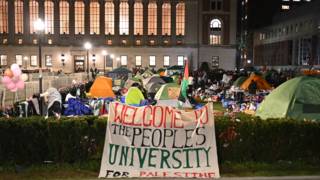
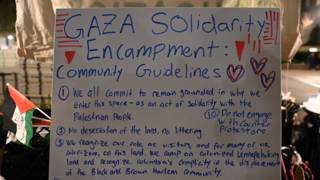
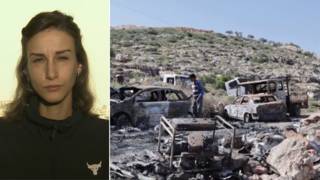
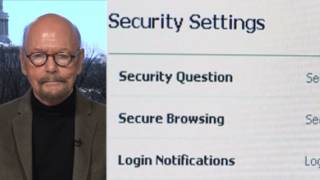





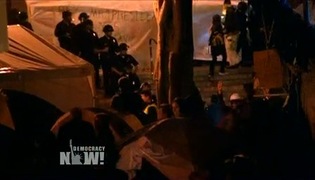
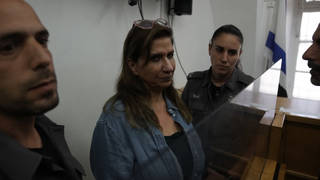
Media Options